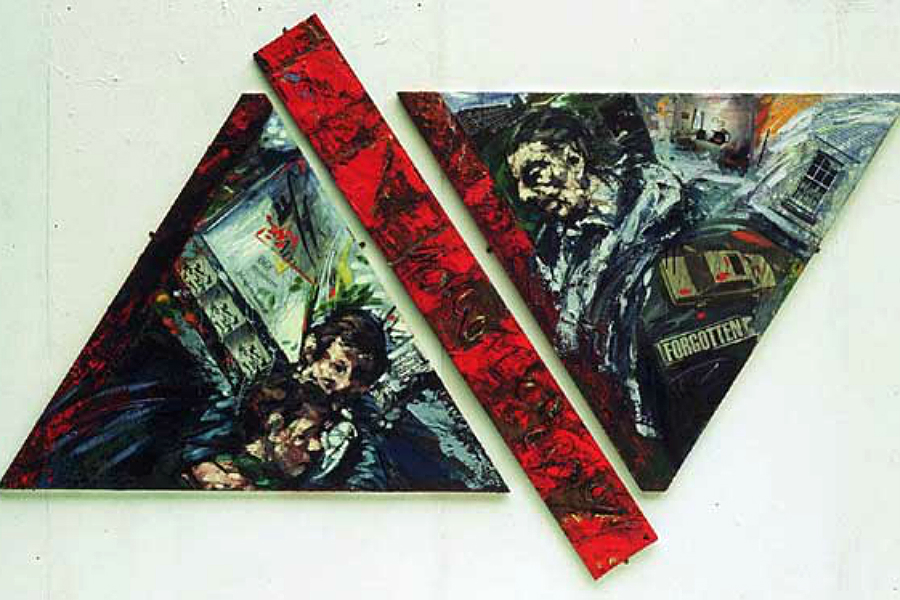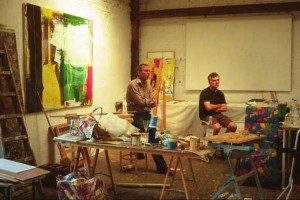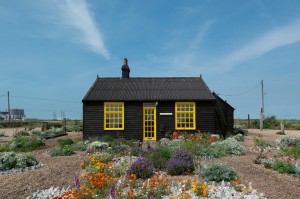Liverpool and Cologne: Non-Identical Twins

Bryan Biggs, artist and Artistic Director at the Bluecoat, reflects on Liverpool’s ongoing cultural links with Cologne following a recent visit to the Rhine city…
Under the title Eight Days A Week, the ongoing cultural exchange between Liverpool and its German twin city of Cologne, one of Europe’s premier centres for contemporary art, grew out of the initial Bluecoat/BBK exchange partnership, which saw around 35 artists between 1987 and 1995 visit and exhibit in each other’s city.
The Cologne writer and critic Jürgen Kisters had picked up the reins in 1999, organising, with the help of Cologne artist Georg Gartz, a large-scale season of Liverpool art in Cologne, followed in 2001 by a reciprocal programme in venues across Liverpool, coordinated by the Bluecoat in collaboration with a group of artists, including Pete Clarke, who remains the anchor man and tireless Eight Days champion at this end of the project. It has continued ever since, always run on a shoestring and with a great deal of goodwill and hospitality.
There are plenty of international artists’ exchanges, but this one is distinct in several respects. Firstly, it has managed to sustain itself, despite intermittent (and often no) funding over a long period. Secondly, whilst visual art is at its core, it has encompassed music, literature, performance, workshops, discussions, football, film and more: Jürgen’s particular interest in Liverpool’s contemporary art is framed by what he sees as its engagement with the life of the city across a social and political, as well as cultural, spectrum. And thirdly, due to Jürgen’s commitment to getting art into different, more social contexts, a wide range of venues, many in the suburbs or on the ‘right’ side of the Rhine (Cologne’s equivalent of Birkenhead), are routinely used: community centres, colleges, churches and independent cultural spaces.

Artists’ studios too are utilised, and many fruitful collaborations between Liverpool and Cologne artists have resulted from this, including Lin Holland and Veronika Moos-Brochhagen creating a large-scale participative installation made from people’s coats and shown in both Liverpool’s cathedrals and in a Cologne church, and Pete Clarke and Georg Gartz’s ten-year partnership producing a dazzling body of paintings, prints and other works together.
This aspect of dialogue between artists is at the heart of Eight Days, and the 2012 manifestation – a month-long programme in the city comprising 22 exhibitions and events – had plenty of opportunities for both formal round-tables and informal discussion.
The sister-city relationship had actually been established in 1952, the first of Cologne’s twenty-seven international partnerships. It began at the initiative of Germany’s first Chancellor after the War, Konrad Adenauer, who as former Mayor of the city remembered the pre-War connections that existed with Liverpool. Municipal architects and planners from there had visited the city to see what they could glean from the Bauhaus-inspired social housing to feed into their strategy for replacing Liverpool’s slums – arguably not a lot.
The two cities could not be more different – in terms of size, regional significance and economically, Liverpool remains very much the poor relation. Yet much has changed since the very real sense of inferiority we felt during the first exhibition exchanges in the late 1980s, when – from our beleaguered position on cash-strapped and Thatcher-shafted Merseyside – we looked enviously at our partner on the Rhine, with what seemed like thousands of artists including major figures like Richter and Polke, world-famous museums, hundreds of galleries and a buoyant art market.
Post-European Capital of Culture, however, Liverpool – with its Biennial now in its seventh edition, Tate Liverpool approaching its 25th birthday, new and renovated venues like FACT, Open Eye and the Bluecoat – now occupies a very different position, with claims to be the UK’s most significant ‘art city’ outside London.
The changes in both cities’ cultural fortunes were examined in two weekend seminars staged during Eight Days, which revealed the real value of the exchange beyond the opportunity for artists to show in each other’s city.
These debates, conducted in English for the benefit of the minority Liverpool contingent, also explored pertinent issues facing artists in both cities that went to the heart of artistic practice: what does it mean to be an artist, and what is their relationship to the city they work in and to wider society?
We compared patronage in Liverpool and Cologne and the strengths and weaknesses of their respective art scenes, their studio structures and galleries, the market and the audiences for art, how art is taught and how it is reviewed and discussed. The conclusions were predictable enough (and hugely generalised) – Germans have a high regard for artists as professionals, which translates into a culture of buying art, whilst UK artists have to explain that making art is their proper job, and struggle to sell; the former’s atelier system of teaching is in contrast to the latter’s modular art school training; Cologne art commands serious media coverage, unlike the paucity of critical attention received in Liverpool.
But when the debate shifted to the artist’s societal role the locals were on shakier territory, as arguments – familiar in the UK – were presented by the Liverpool contingent concerning socially engaged practice and the problems caused by increasingly instrumentalist demands of public funders for art to engage with broader social agendas such as health and wellbeing, social inclusion and regeneration.
The second debate, back at the BBK, threw up another contentious area: where were the young artists in Cologne? One Liverpool artist commented that he’d not encountered anyone under 30 in the studios he’d visited. The closure of Cologne art school a decade or more ago in favour of establishing a new media high school (with rival Düsseldorf retaining its fine art academy) was put forward as one reason for this apparently ageing demographic, another the lure of Berlin (including its available and cheaper spaces) for younger artists.
You could sense a resignation to inevitable stagnation, with an older population of artists (and gallery owners) unchallenged by younger ones unable to afford rents and seemingly uninterested in the old models of artists organising big studio complexes, or having the ambition to take over buildings and lobby politicians. By way of an alternative explanation however, the few young voices present (and some older ones too) suggested the brave new world of social media and networked creative communities bypassed traditional strategies and means of disseminating art.
In any case, the sheer volume of art practice in Cologne means that emerging artists are to be found elsewhere, outside of the studios and galleries involved in Eight Days, for instance at the Kölnischer Kunstverein. Less a crisis in art production in the city that the debate suggested, these shifts are perhaps more a reflection of generational differences in the way that artists negotiate their way through their practice in a changing environment.
Once again, this illustrated the pronounced differences between Liverpool and Cologne. All the more reason for the relationship, and spirit of that ongoing cultural exchange between the pair, to continue.
Bryan Biggs
Images courtesy Pete Clarke and Eight Days a Week





